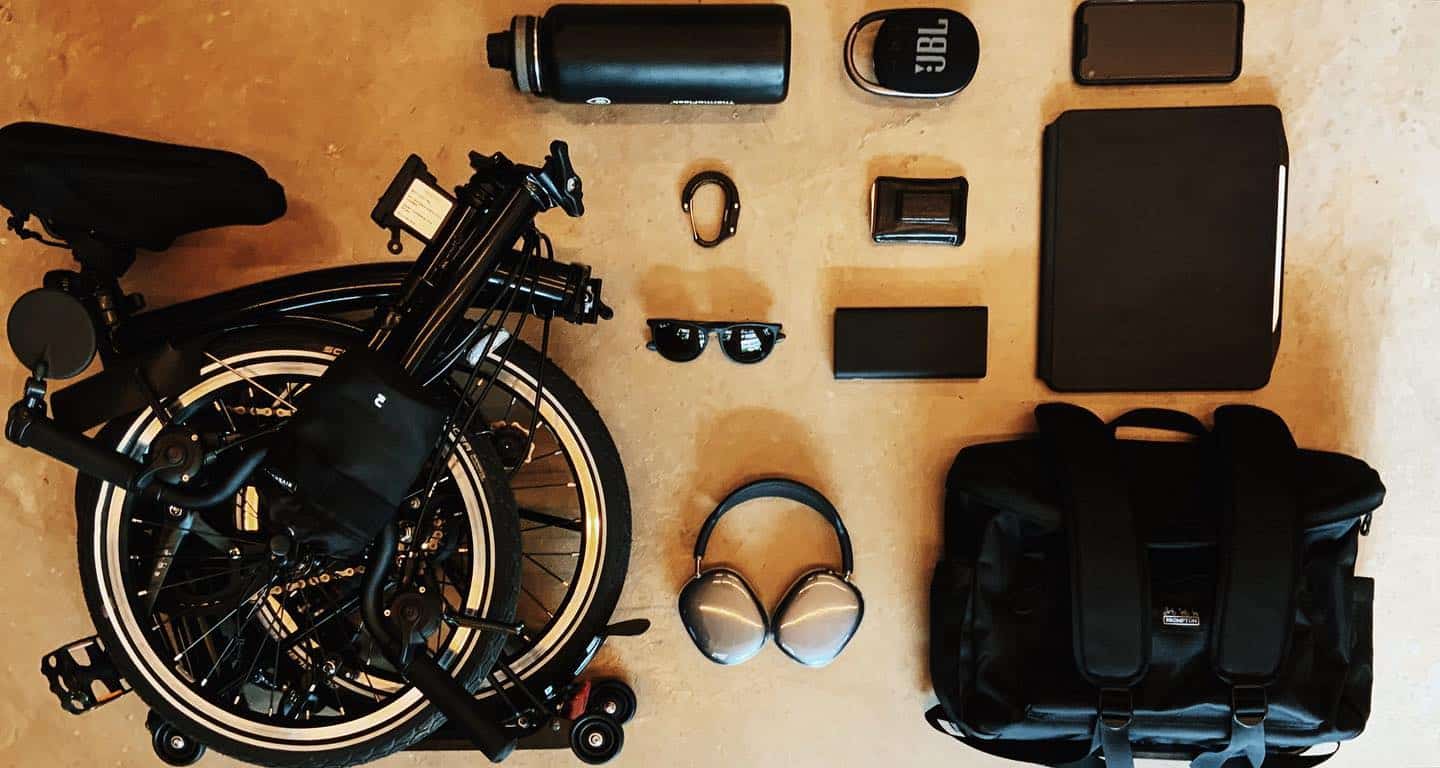
The first electric toaster wowed the public in 1893; the first electric washing machine had much the same effect 10 years later. The first mobile vacuum cleaner followed in 1905, while the first radios with tuners appeared in 1910 and the first refrigerator for home use debuted in 1913. It is worth noting that electricity was very much a new thing at this time, with the first grid starting operations in 1882. Clearly, the world was witnessing an unmatched outpouring of results from the workings of brilliant minds, all of which improved everyone’s quality of life way past the point that even the royals of the previous century could have expected.
As electricity and devices that depended on it became more ubiquitous, there was a problem on the horizon. In fact, electrical currents and the fields they generate would soon become a thorn in the sides of one particular trade, and in a very specific way.
In a 1938 issue of the “Revue internationale de l’horlogerie”, an irate account recorded the following sentiment: “Almost everywhere today, we find modern electrical appliances, but also, according to The Horological Journal, it is not uncommon for a lady coming out of a hairdressing salon to find that her watch has been magnetised by a permanent wave, hair drying etc. (…) ‘Watchmaker,’ the customer will say, ‘the watch you sold me that was supposed to be so accurate is in fact gaining half an hour a day!’…But my dear customer, you should not have turned it into a compass. Steer clear of sources of electricity! Yet another point on which the public must be educated!”
While it is true that anti-magnetic timepieces had been a matter of research for watchmakers as early as in the mid 19th century, series production of anti-magnetic wristwatches was pioneered much later by Le Locle-based manufacture, Tissot, in the 1930s. But Tissot did not simply produce watches using the accepted approach of using non-magnetic materials for their balance wheels and balance springs to load up their store shelves. Tissot took a commendable extra step.
A note recorded within the company in 1941 states: “In our research laboratories, we possess a machine which is unique in the world, built according to the data provided by our technicians and enabling magnetic fields of varying intensity to be produced. Tissot watches are exposed in practice to the magnetic fields produced by this machine, which we call the chrono-electro-magnet; the machine enables us to verify their resistance to magnetic fields.” Thus, Tissot watches were not simply labelled anti-magnetic at the time. They were certified anti-magnetic against as much as 1,000 gauss for pocketwatches and 200-300 gauss for wristwatches.

Synthetic Frontiers
In this manner, Tissot often found itself in the vanguard. Let us not forget that in 2023, Tissot is a 170-year-old company. It is no small feat for such a venerable firm to remain innovative at every turn, even the dark ones, as we will get to, and that is relevant to the watch on our cover this issue, the Sideral. To begin with, let us cite some bona fides for the Chemin des Tourelles firm, which even the most prominent of watchmakers deserve.
In 1944, Tissot created the first Tissot self-winding watch; in 1950, the Navigator, the self-winding universal calendar watch, and in 1956, the super water-resistant T12. In 1958, Tissot revolutionised watchmaking with the introduction of the idea of a single basic calibre, the calibre 781, which allowed the brand to streamline production and produce variations with brand new efficiency. Beyond progressing the art and science of watchmaking mechanics, Tissot also hugely invested in the hunt for ever more exciting and progressive materials to produce their watches.

In 1951, the man at the helm of the company was Edouard-Louis Tissot. From the get-go, he put his weight behind an idea to create a self-lubricating synthetic bearing to replace the pervasive jewel traditionally performed this role (by the mid-20th century, watchmaking had moved on synthetic rubies, but these were not – and are not – self-lubricating – Ed). His passionate encouragement of the research led to the project evolving to include a movement and case made of plastic, which held the potential to be produced by a fully automated process.
Tissot even established a second research unit towards this endeavour, which was called the Office for Future Watchmaking Design. By 1964, progress was made to such a point that the team at Tissot were able to make a push and in 1971, presented the world with the Astrolon, an 11½”’ movement wholly made of plastic, save for the mainspring and balance spring. The movement was presented at Baselworld in 1971 as a proof of concept. The research made its way through further fine tuning before being brought into production as the Sytal and Idea 2001, in 1974. Alas, with quartz technology looming in the background, the Astrolon initiative’s days were already numbered. Indeed, the quartz revolution very nearly placed Tissot itself under the proverbial sword of Damocles, but time had not run out on the brand.

How the Sideral Came to Be
There was yet another creation born out of Tissot’s deep investment into alternative modern materials that made for a landmark moment for the brand. It is a watch that has found new audience here in the 21st century, especially among young collectors. In 1969, the Tissot Sideral was launched forged in a monobloc fibreglass case with its bezel made in steel. This was possibly the first instance of the use of fibreglass in watchmaking.
In brief, fibreglass is made from melting, essential raw material that make up glass, into a molten mixture. This viscous form is then extruded through a sieve, of sorts, to form filament strands that are mere millimetres in diameter. Once sorted according to size, these filaments are bundled for next steps. In the instance of forming a watch case, the filaments would have to be cut into pre-determined lengths and mixed with a formulated resin before being cast into a mould. After the resin and the filaments have bonded, a monobloc structure is formed, which can then be finessed, resulting in the final case structure for the watchmaker’s use. A superb advantage in using fibreglass to make watch cases is that the material proves to be very light on the wrist while possessing incredible durability. Another great attribute of fibreglass is that in its production process, dyes can be added to give the final item a great sense of identity.
READ MORE: Tissot’s Funky Trio
At launch, the watch bore a regatta-timing rotating bezel, but further down the period of its production, there were alternate variations in terms of functions and sizes. Tissot also developed an innovative perforated strap for the Sideral. These straps were made of rubber and in bright colours. Thereafter, the securing end of the strap itself had a clever integrated pin, of sorts, that the wearer could pin onto the perforations of the alternate strap end which would run underneath the former. It sounds a little complicated but in practice, is very simple.
Alongside the Sideral, Tissot also launched the Sideral S, which the brand boasted had an anti-magnetic case and was super water-resistant. This was owing to the fact that its dome and dial formed a Faraday cage and protected the movement within against magnetic fields up to 150 gauss.
There was a certain video advertisement that was launched for the Sideral S, which offers us a great view into how Tissot wanted to ensure that buyers would be left without doubt about the timepiece’s toughness. The video starts off with a shot of the watch ticking away inside a solid block of ice. As the narrator highlights this, the camera zooms out to show a wider view of the block of ice and a thermometer in the background that reads -10ºC. A gloved hand then swoops into the shot, picks up the block of ice and drops it immediately into a beaker of boiling water, set atop a lit Bunsen. We’re then led through some of the Sideral S’ more pertinent qualities: its steel and fibreglass case, and the Tissot automatic calibre within. The shot then switches back to the watch inside the beaker, which is no longer encased in ice. The watch then gets lifted out onto a bench surface, showing its seconds hand ticking away, while the narrator proclaims: “The Tissot Sideral is super resistant. Super resistant to snow, sand and sea.”
Estelle Fallet, author of the books titled, “The Story of a Watch Company” and “Tissot: 150 Years of History” (both published to mark Tissot’s 150th anniversary) recounts in the former publication a remark that the projectionist had made about the effectiveness of the advertisement after it was shown to her saying, “I can assure you that the effect is obvious. In 1972, the TV ad that we just saw played a vital part in the success of the Tissot Sideral. In February and March of that year, after the advertisement had been shown, sales increased by 31% and 39% respectively.”
The Sideral evolved yet again in 1971, this time housed in a plastic case. The plastic caseback was even used to mount the movement, while its bezel was locked with a bracket. While the plastic-cased Sideral was not made available for too long, lessons learned from its production along with Tissot’s initial 1951 venture into synthetic materials later proved to be vital in the 1990s, when plastic was in vogue with the public, and some of the biggest names in watch making heeded market sentiment.

Triumphant Reprise
We have of course spent the above paragraphs recounting why Tissot has a reputation for being a pioneer and for being forward-thinking, so that we are able to appropriately appreciate the 2023 relaunch of the monumental Tissot Sideral. Our peers at Time+Tide, whose ecommerce platform Time+Tide Shop were the exclusive launch partner for the timepiece, reminds us that, “The 2023 revival of the Tissot Sideral is inspired by that first-ever fibreglass…watch that Tissot launched in 1971. The monobloc case, unique strap fastening system and the regatta-timing rotating bezel and dial markings were a truly novel blend for Tissot. The Sideral family as a whole featured funky shapes — from lugless bullhead chronographs to tiny 33mm monobloc-cased watches. For its time, the Sideral S was somewhat of a giant measuring in at 42mm. The hidden lugs of the case certainly helped with that, although its selection of bold colours didn’t make it stand out any less. Accessible only through the front due to its monobloc design, the watches were powered by the Tissot 784 calibre, a low-beat 18,000vph movement with a respectable 35-45 hour power reserve.”
The trio of new Sideral timepieces that have just been announced feature a 41 x 46.5mm — thoroughly 1970s themed — barrel case, made of a thoroughly 21st century material, forged carbon. It is worth bearing in mind that the 41mm measurement is the width, making the lug-to-lug length more significant but in practice, wearability is not negatively impacted, given the lugless design. The watch is also quite lightweight, weighing a total of 90 grams, including the strap. This is largely due to the properties of the forged carbon elements.
Again, in brief, forged carbon is produced by using tiny fragments of carbon fibre that are mixed with a liquid resin and then shaped inside a desired compression mould. Certain specifications of forged carbon, depending on their higher fibre volume content and higher variation in strand orientation, can technically have more average strength when compared with regular carbon fibre (this description is our own, and there is no official definition of forged carbon – Ed).
In the instance of the 2023 Sideral, the forged carbon used has a distinctly desirable marbling all over its surface, particularly the blue variation which has blue marbling on the case’s otherwise matt black surface.
The timepiece’s black PVD unidirectional bezel features a luminescent diver and regatta scale, which helps the watch stand out from the plethora of watches out there with dive bezels. Owing to the fact that both boating and diving are water related activities, the 2023 Sideral is rated water-resistant to 300m. The dial itself, too, features a multi-coloured luminescent regatta countdown gauge design in green and red. The seconds, or minutes scale, set after the regatta countdown gauge on the dial, is executed in a prominent chemin de fer styling, coloured to match the included strap: yellow for yellow, blue for blue and grey for the red strapped version.
If, however, you prefer a more subtle colour for your strap, Tissot has made alternate green, orange, and black straps available to purchase. All straps are fashioned after the innovative perforated strap designed for the original Sideral and, of course, feature the integrated securing solution.
Turning the watch over, through the stainless steel rimmed exhibition caseback, the self-winding Powermatic 80 Nivachron is in clear view. The movement is a staple from the Swatch Group, made as it is by ETA, and features the Nivachron hairspring that beats at 3Hz. This remarkable automatic movement accounts for the 2023 Sideral’s hours, minutes, seconds and date display, all held up by a generous 80-hour power reserve. This extraordinary power reserve makes the Sideral a lot of watch for not too much dosh, as we have written before (albeit about the PRX in that case).
In the Autumn issue of WOW last year, present Tissot CEO Sylvain Dolla explained what it takes for a house like Tissot to keep fresh yet remain true to its roots: “Tissot stands by its motto ‘Innovators by Tradition’, which is rooted in the brand through its history. This is still the case today, as we stay true to these roots, which leads us to offer watches, features and communication that are in touch with our times and that appeal to new audiences, while remaining faithful to our brand identity.
“A good example of this is the latest PRX Collection and its campaigns. Like the product, the campaigns take inspiration from the past yet have a modern appeal with an edgy and flamboyant twist; we are using a full 360° activation to roll them out.”
READ MORE: Tissot CEO Sylvain Dolla Wants To Make Watches For Everyone
As wildly successful as the PRX has been for Tissot since it was unveiled, no doubt, the launch of the 2023 Sideral holds a different sort of special significance for the company. Notably so, given how meaningfully it draws attention to the brand’s decades old foray into synthetic materials and its attitude of forever applying an innovative mindset to watchmaking, beyond the mechanical movement itself, to — for instance — the seemingly mundane wrist strap. In more ways than one, the Sideral is a page from Tissot’s past, and now its present, which perfectly encapsulates its motto: Innovators by Tradition.
On that note by Dolla about the PRX, we do have something to say about the new 35mm variants of the PRX, including the latest additions…

While the 41mm Tissot Sideral is our main focus this issue, we also saved some space here for one of the most exciting and widely anticipated smaller automatic watches in recent memory, the PRX 35mm. Yes the 35mm PRX model, formerly only available in quartz, is now equipped with the Powermatic 80 movement. We would love to toot our own horn here and say we saw this coming, but we did not think this movement would work in a smaller case. Well, Tissot surprised us all, and we can only think of those who got the quartz version feeling a bit put out. If this is you, the solution is simple: get the automatic to complement the quartz model.
This works out even better if you did not buy the 40mm because you now get a sub $1,000 automatic in a smaller size. In fact, the 35mm and 40mm watches are the same price, or at least start at $930, but most are $990. We dare say that no one anticipated this pricing strategy, which is unprecedented for a Swiss watchmaking brand. At the end of the day though, price is not what determines which of the seven PRX 35mm models might be for you. Initially, there were five versions, each of which bore textured dials (except one). These are white mother-of-pearl, basic black, green, blue and grey; that last one distinguishes the steel case with rose gold bezel PRX 35mm model. The steel and gold model stands even against the previous steel and gold model with 44 Top Wesselton diamonds on the that grey dial. Clearly, this is the dearest version of the PRX yet, priced at $2,840, which still seems more than fair. While this story was in progress, Tissot revealed another two models, one in steel with the very trendy ice blue dial and another being perhaps the most 1970s inspired model with a gold PVD case.
READ MORE: Best in Class: Tissot PRX Chronograph
What you get for the abovementioned price bracket is everything the 40mm watch offered, which was already pretty generous. The bracelet and case remain class-leaders in this segment – if you want a watch like this from a legacy Swiss brand, there is nothing like it, even without considering the pricing strategy. The water-resistance remains the same, at 100m too. Just to be certain here, let us go over the virtues of the PRX automatic again. To get it out of the way and save some space, a refresher on the Powermatic 80 movement is covered in the main section of this story, on the Sideral.
Movement values aside then, connoisseurs may find themselves more impressed with the use of space demonstrated in the 35mm model versus the 40mm one. On the wrist, the 35mm model is considerably smaller, with the top and bottom edges of the watch well within the dimensions of most people. If you are the sort of person who comfortably wears a 44mm watch, the 35mm PRX might appear too small but give it a shot anyway. This is not an endorsement of one size over another because two individuals with the exact same wrist size may feel very differently about the smaller and larger models.
The final considerations for the different sizes of PRX models are all about fit and comfort, although you will want to recall that the options for the 40mm and 35mm models are not exactly the same. On the practical level, the different options mean that you could conceivably get both sizes.
We spent a lot of time going over the appeal of the PRX over the years and it should be clear by now where you, the collector or enthusiast, stand. To our minds, the final gap in the PRX’s appeal is now closed thanks to the 35mm model. Given that watch buyers overall have rediscovered the appeal of smaller timepieces, Tissot’s move here is perhaps precisely on schedule. That is remarkable, considering that all watch brands work several years ahead of time. Should you be amongst the hardcore big watch enthusiasts, it may be that Tissot will not be making something in that area. Dolla and his team are playing their cards close to their chests, as they have been this entire time. What we can say, based on Dolla and his team’s public comments (specifically to WatchAdvisor in a lengthy YouTube video – Ed) is that the PRX was not the result of specific market research, although it does benefit from having exactly the right look and feel to match contemporary horological fancies.
Additional Reporting Ashok Soman
Photography ching@greenplasticsoldiers
Art direction marisa Xin
This article was first seen on WOW’s Autumn #70 Issue.
For more on the latest in luxury watches, click here.







